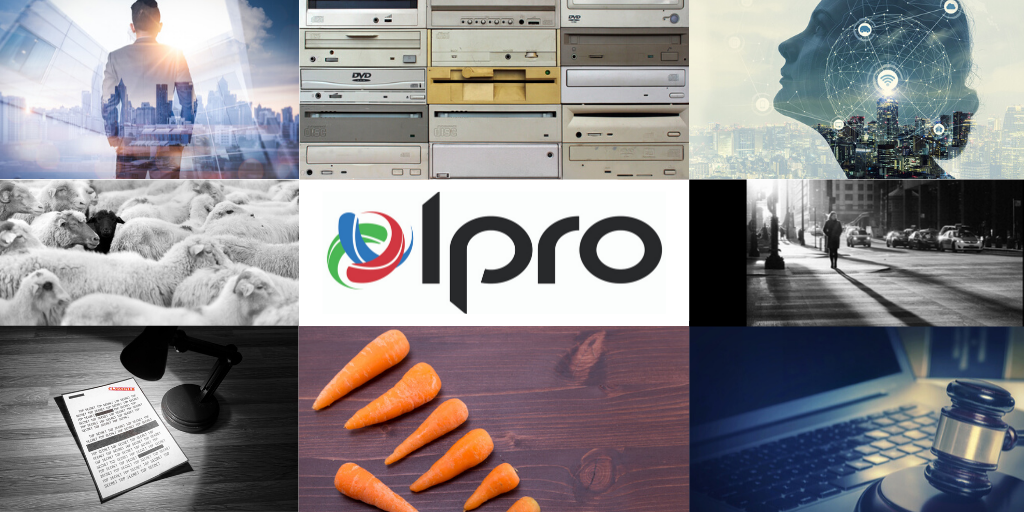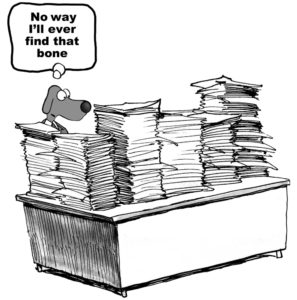
There were plenty of things happening in the world of eDiscovery this year, and the IPRO Newsroom was there to cover it – Here are our top 10 articles of 2019!
#1: What is Hybrid eDiscovery and How Will it Shape the Future of Legaltech?

Software alone isn’t enough. Data continues to grow in size and complexity & the need for that data in investigations & litigation is now a daily occurrence. For an agile response, innovative approaches to eDiscovery are necessary & rather than trying to go it alone, forward-thinking legal teams will look toward a hybrid approach.
#2: The eDiscovery Impostor and How to Spot Them

Technology is only as good as its users, which means you have to be on the lookout for impostors in eDiscovery.
#3: AI in eDiscovery: Expectations vs. Reality

When people in eDiscovery hear the term AI, they think science-fiction, with robot lawyers doing the work. But in reality, AI is an amazing tool, which allows attorneys to more effectively do what they’ve always done: practice law.
#4: Redaction Errors in Federal Opioid Case Reveal Importance of Legal Technology

For those in the legal industry, redactions are a part of everyday life. But this doesn’t mean they’re mundane! Failure to redact or make sure that redacted content isn’t produced can be case ending (and job ending for the person responsible for the error).
#5: 5 Ways Paralegals Can Quickly Sharpen their eDiscovery Skills

Becoming an eDiscovery specialist can really set you apart from other paralegals & lead to expanded career opportunities, but the challenges of eDiscovery aren’t often a traditional part of a paralegal’s training. Here are 5 ways to start sharpening your eDiscovery skills!
#6: 5 Reasons Your Legal Team is Being Held Back by Legacy eDiscovery Software

Change Can Be Daunting: Here are 5 reasons why continued use of unsupported legacy software is a ticking time bomb in your eDiscovery process.
#7: eDiscovery Technology for Small Law Firms? The Answer Isn’t Necessarily Found in the Cloud

This is where small firms find themselves stuck: either they adopt cloud-based solutions that were built with larger users in mind or they are left with outdated, unsupported desktop solutions. It’s no wonder many of them simply stick with the old way of doing things. But instead of a “go cloud or do nothing” approach, the small firm solution might be a powerful, locally deployed, low-overhead eDiscovery suite.
#8: How to Turn eDiscovery into Baby Carrots: 5 Models for Recovering your Law Firm’s eDiscovery Costs

Most law firms see eDiscovery as a cost they simply have to absorb. Others will outsource eDiscovery work and pass the bill on to the client. However, with the right cost recovery tactics, the litigation support team can become one of the most profitable divisions in the firm or agency, essentially turning a cost center into a profit center.
#9: Two Murder Investigations Highlight the Role of eDiscovery in Criminal Investigations

Mobile phone data, GPS, social media, surveillance video, and other new media types are continually being used to investigate criminal cases and bring them to trial. Since the use of these types of data are being used to solve crimes, attorneys and courts must be prepared to handle the electronic data while trying these cases.
#10: The Forgotten Middle Child of the EDRM: eDiscovery Processing Challenges and How Technology Can Help

The processing stage of eDiscovery is like the forgotten middle child of the EDRM. Most people are focused on focused on collection or review, while the the processing stage – which falls between those steps – is just expected to happen. Like magic. But processing isn’t magic. And it shouldn’t be overlooked.
Are you interested in the top 10 eDiscovery memes of the year? Click here!


